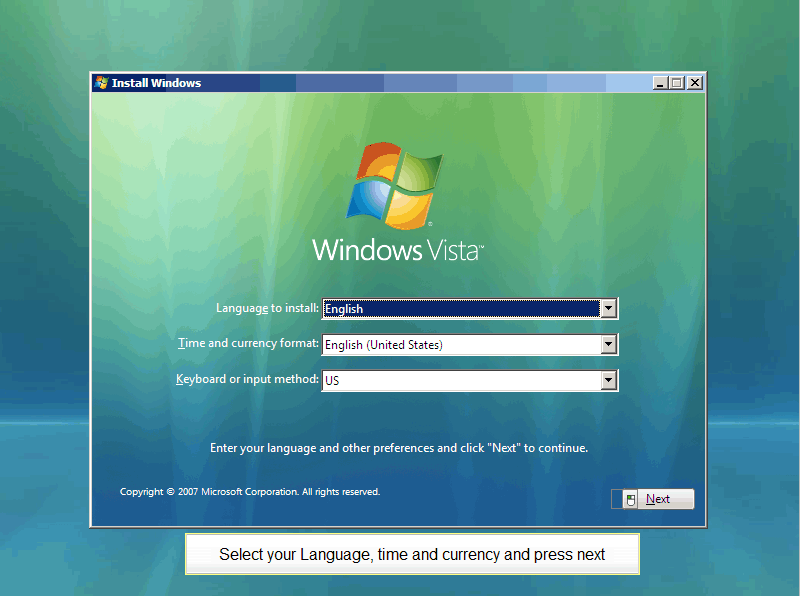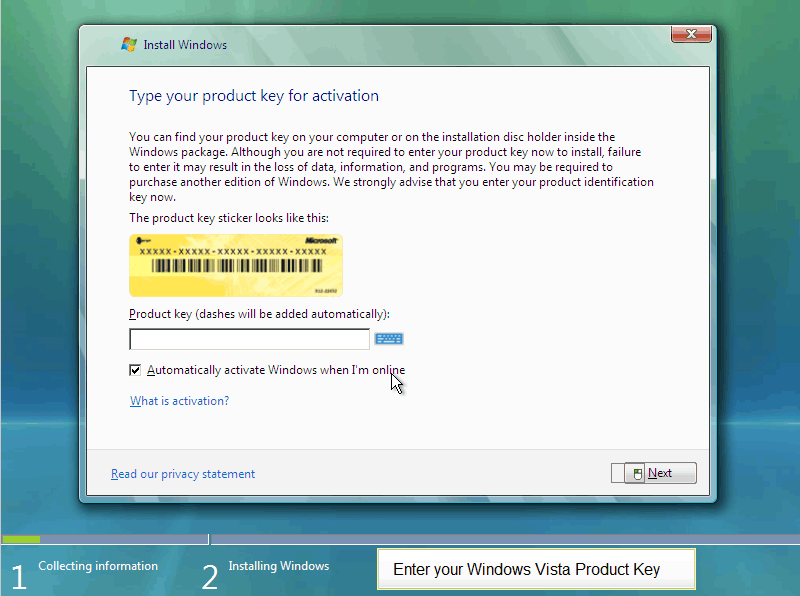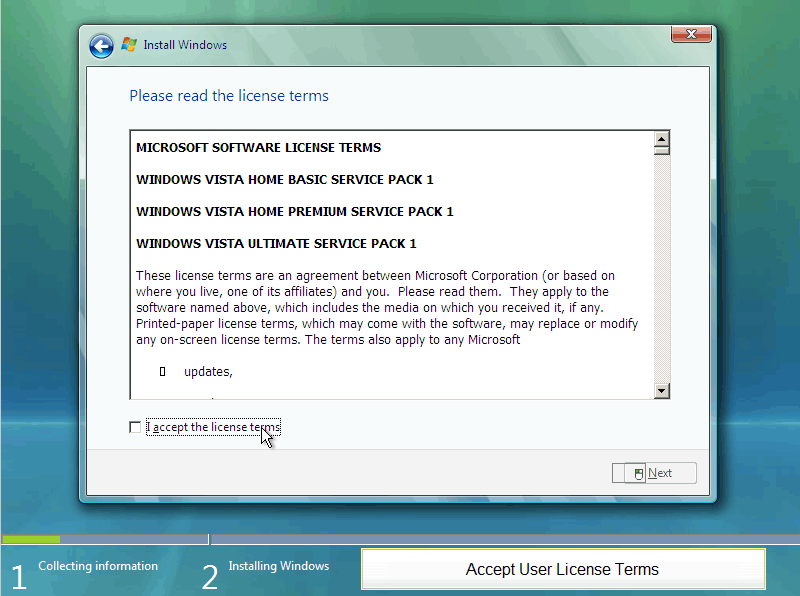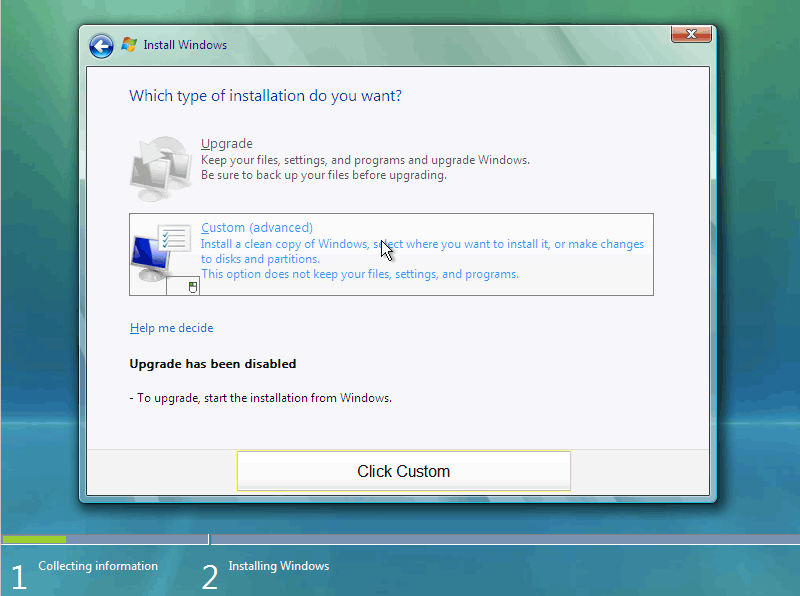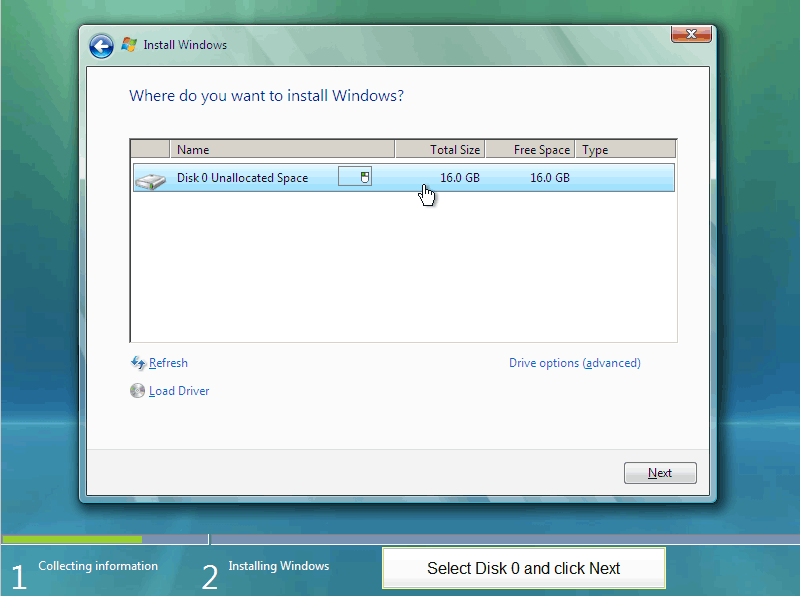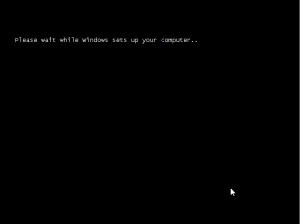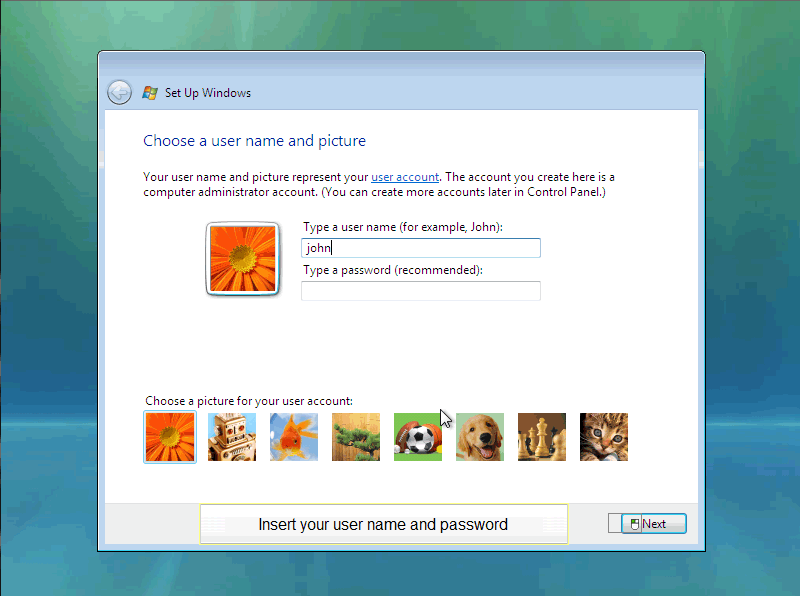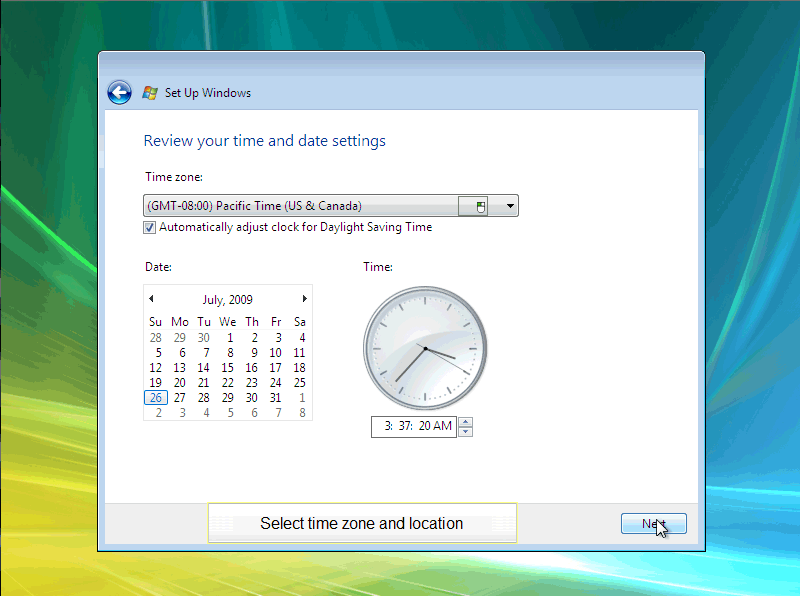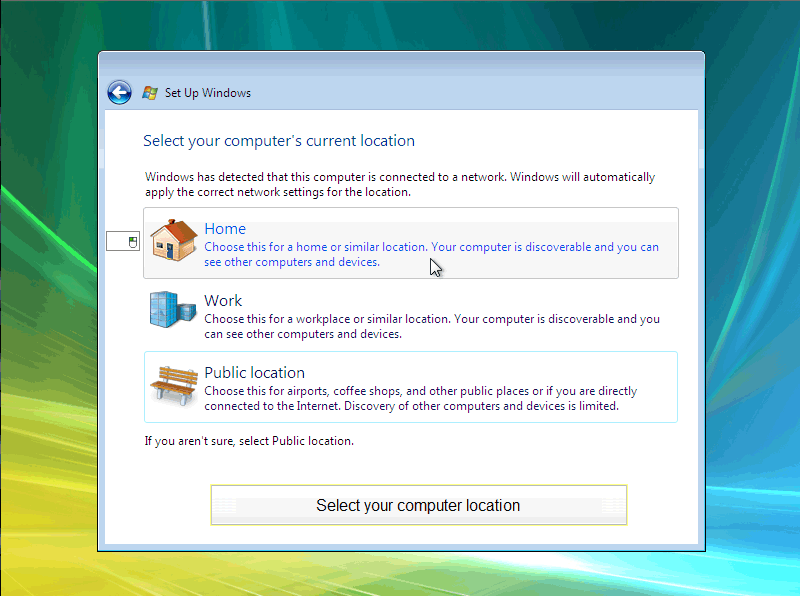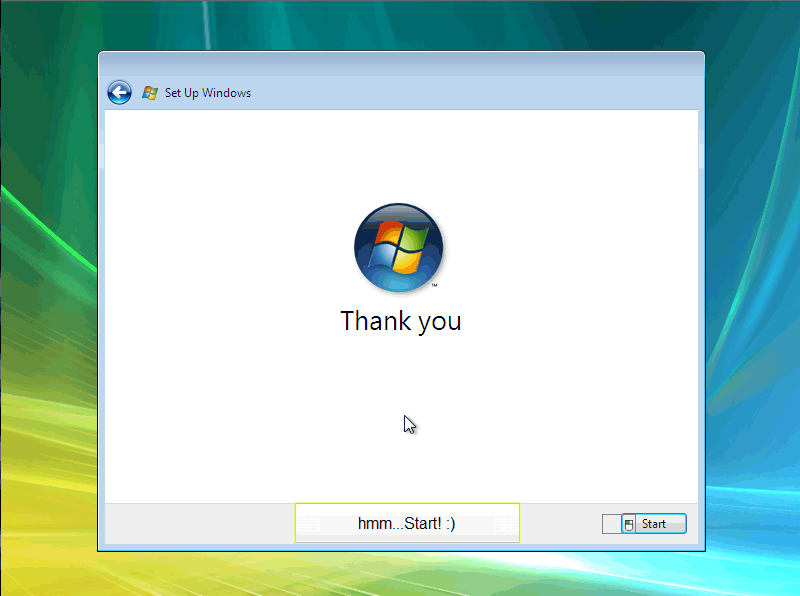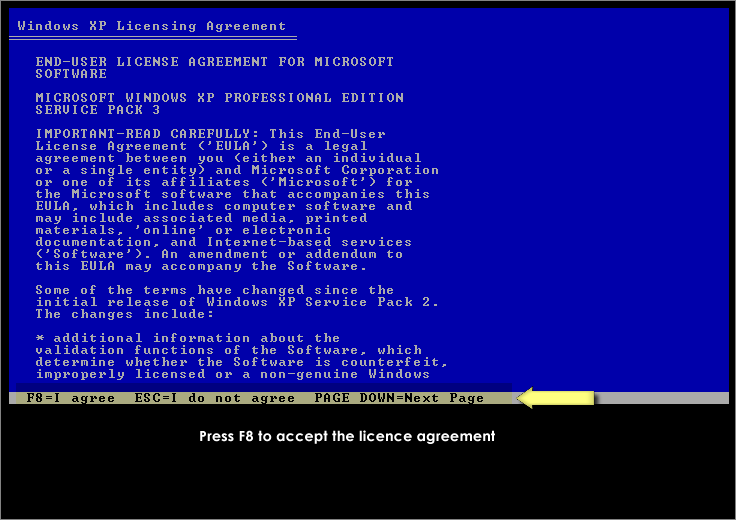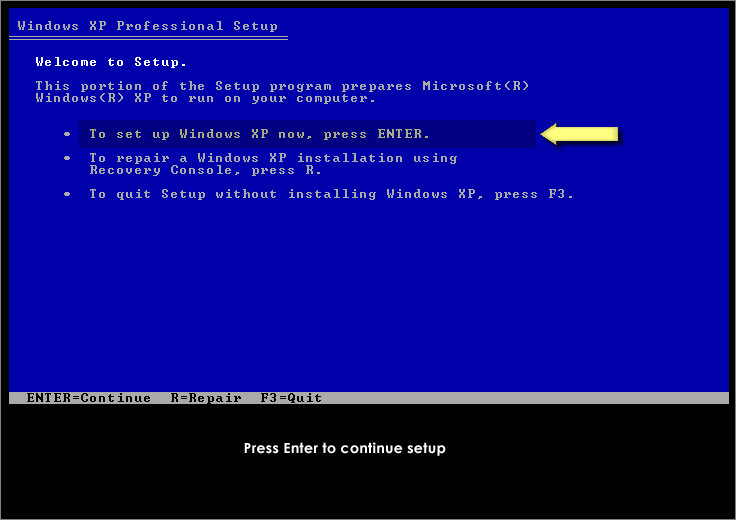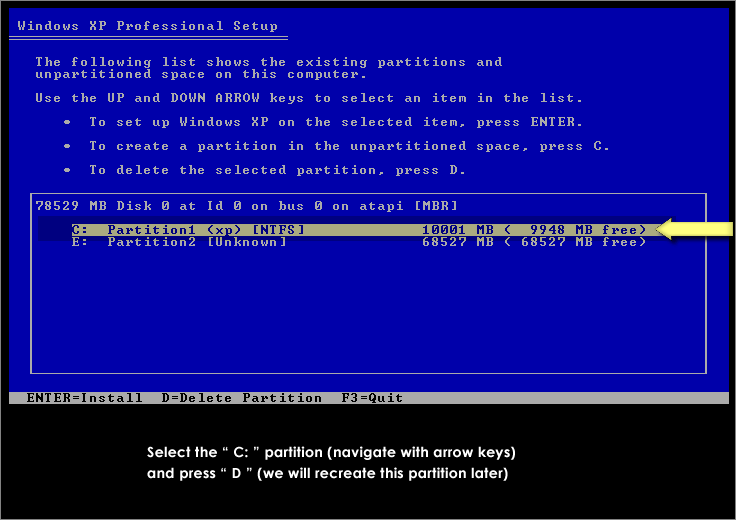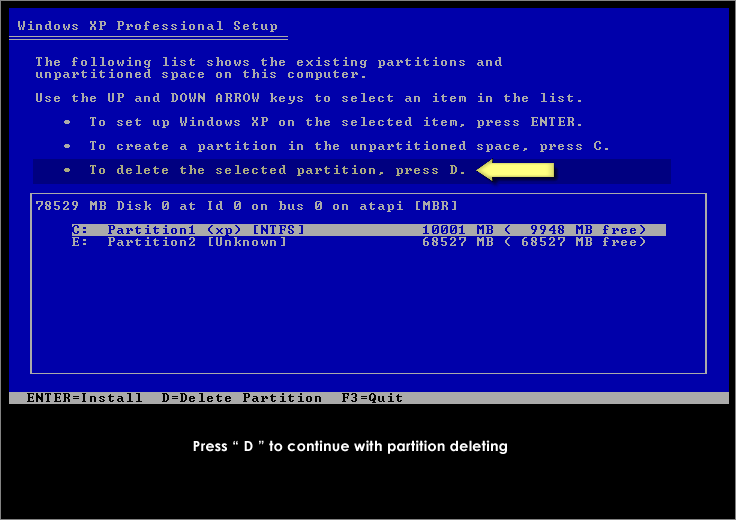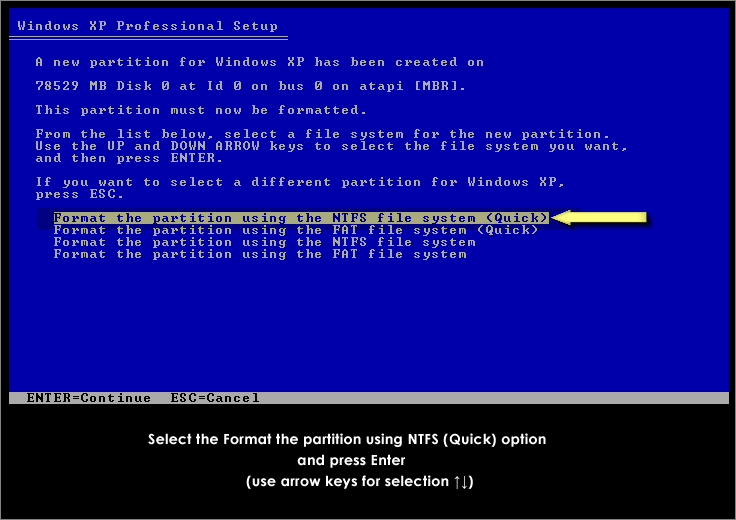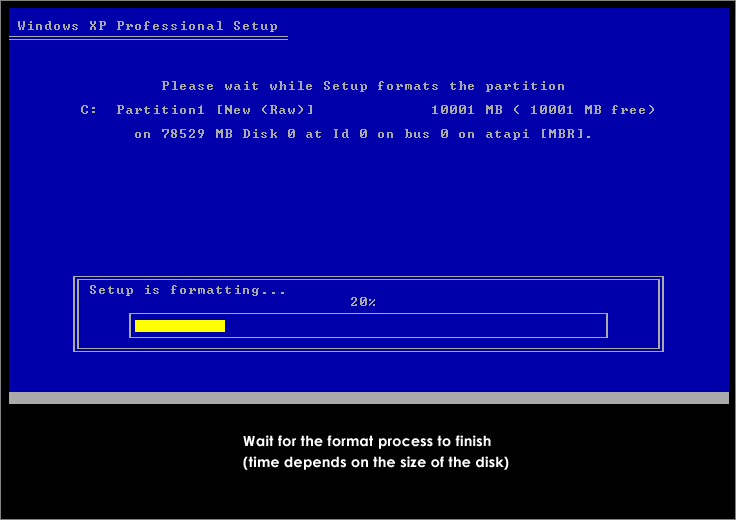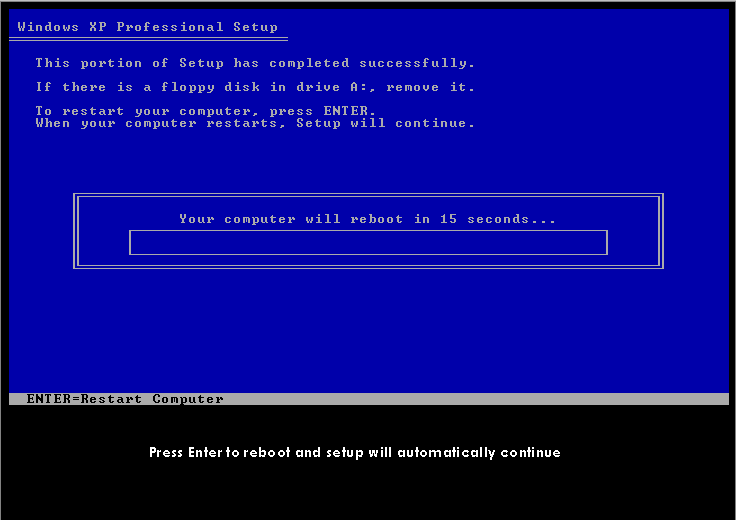
In this tutorial we will be installing clean version of Windows Vista.
Usually people format windows vista in try to fix their system, repair some functionality or upgrade from windows XP.
Recommended: If you are not sure about your computer hardware compatibility with Windows Vista, get this
Upgrade Advisor and check your system compatibility. Next make sure that you have the Drivers CD (that came when you’ve purchased your PC), or if you don’t have them, download the latest Vista drivers for your hardware (you can find them at the support section of your hardware manufacturer, remember to save them to different partition than “C:” (don’t save them in MyDocuments folder, it will get deleted with the formatting), safest way is to store them in other partition than C: (ex. D: , E: , removable drive like USB or burn them on a CD/DVD)
Now after you are sure that your PC is compatible with Vista, and you have all the drivers saved, you can proceed with Formatting Windows Vista.
Step 1. Insert your Windows Vista DVD. The DVD is bootable so after you restart your PC (with the DVD inside) the Windows Vista Setup will begin loading ( if the setup doesn’t start automatically, make another restart and press F2, or F8 after the boot screen and select boot from DVD ).
Step 2. The first screen of the Format Windows Vista sequence will show up. At this point you need to select your Language and Time and currency format (click the image to enlarge). Press Next.
Step 3. Press Install Now
Step 4. After a min you will be asked for your Product Key.
Scenario 1:
If you don’t have your product key, you can skip this step and at the next step you will be asked to pick Vista Package that you want to install : Vista Home Basic, Home Premium, Business, Ultimate. If you install windows vista without providing product key, after 14 days you will have to enter a valid product key, or if you don’t, you’ll be forced to format windows vista again. This is good if you want to test which windows vista version is best for you, before your purchase.
Scenario 2:
You enter your product key (keep it handy!), and at the next screen your purchased version will be auto-recognized.
Step 5. Accept the Microsoft Windows User License Terms and press Next
Step 6. Dialog – “Which type of installation do you want ?”
Scenario 1: If you already have another operating system installed (ex. Windows XP) you will have the Upgrade option enabled. It’s up to you to decide if you prefer “clean” install or upgrading from previous Windows Installation. Clean install is recommended for improving system performance, and Upgrade Setup is recommended if you have some files in your C: , My Documents, or Desktop folders that you don’t want deleted.
Scenario 2: You already have operating system installed but you want to format your drive, deleting the old system and installing fresh Windows Vista copy. In that case select the C: drive and press Format ( don’t format all drives! only the primary where we are installing Windows Vista – ”
C: “. The setup will do the rest.
Step 7. Select Disk 0 and click Next
Step 8. The copy process will begin. This process can take some time, so relax a bit, make a coffee or something :D . Your input won’t be required here for some time.
Step 9. After Windows Vista Setup finishes, the computer will reboot.
Step 10. Windows Vista files are copied , and now setup will configure Windows Vista for your PC. This step will take some really good time.
Step 11. Installing Windows Vista finishes, insert your User Name and Password here.
Step 12. Give your PC a name! and select one of the colorful backgrounds
Step 13. Select your preferred security settings. If this computer is not behind a firewall, the best option is the ” Use Recommended settings”. If you are using firewall then you can select “Install important updates only” (Windows Update). If you want to be protected and your Windows Vista to have the latest updates from Microsoft , select the first option.
Step 14. Select your time zone and location.
Step 15. Network Configuration – Select your computer location. This settings sets your network permissions.
Step 15. This is self explanatory :)
Welcome to your new Windows Vista Operating System
Step 16. After you press Start, some Windows Vista settings will be upgraded automatically.
Step 17. You now need to install some drivers that the system will not install automatically.
Thats it! You’ve finished installing Windows Vista.



 In this tutorial we will be installing clean version of Windows Vista.
In this tutorial we will be installing clean version of Windows Vista. 